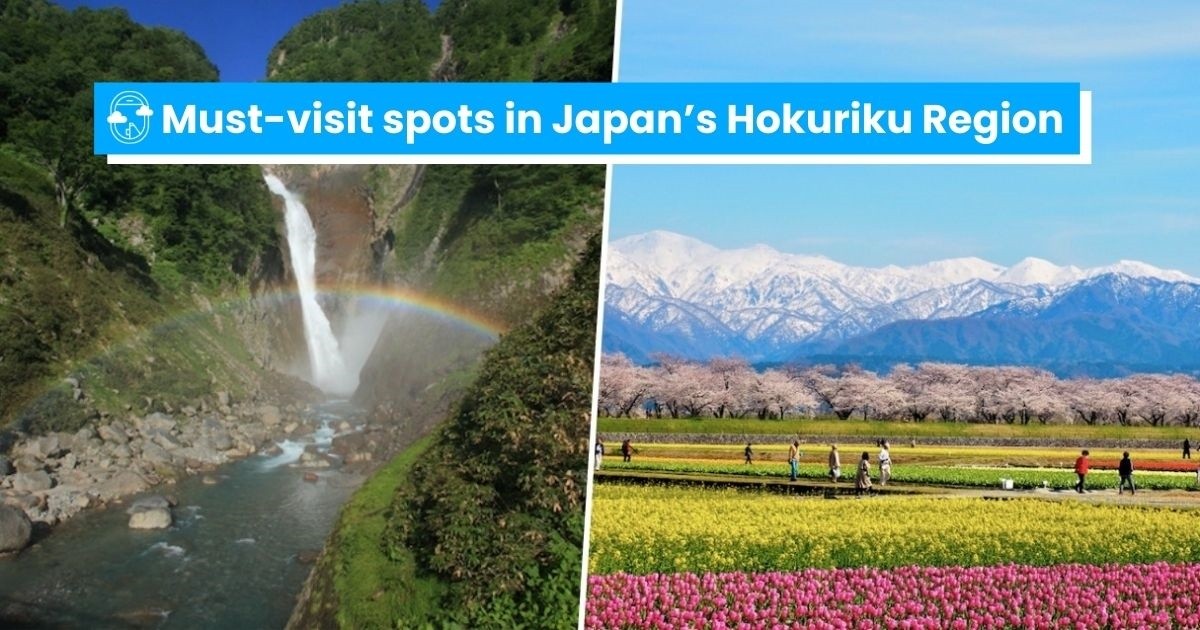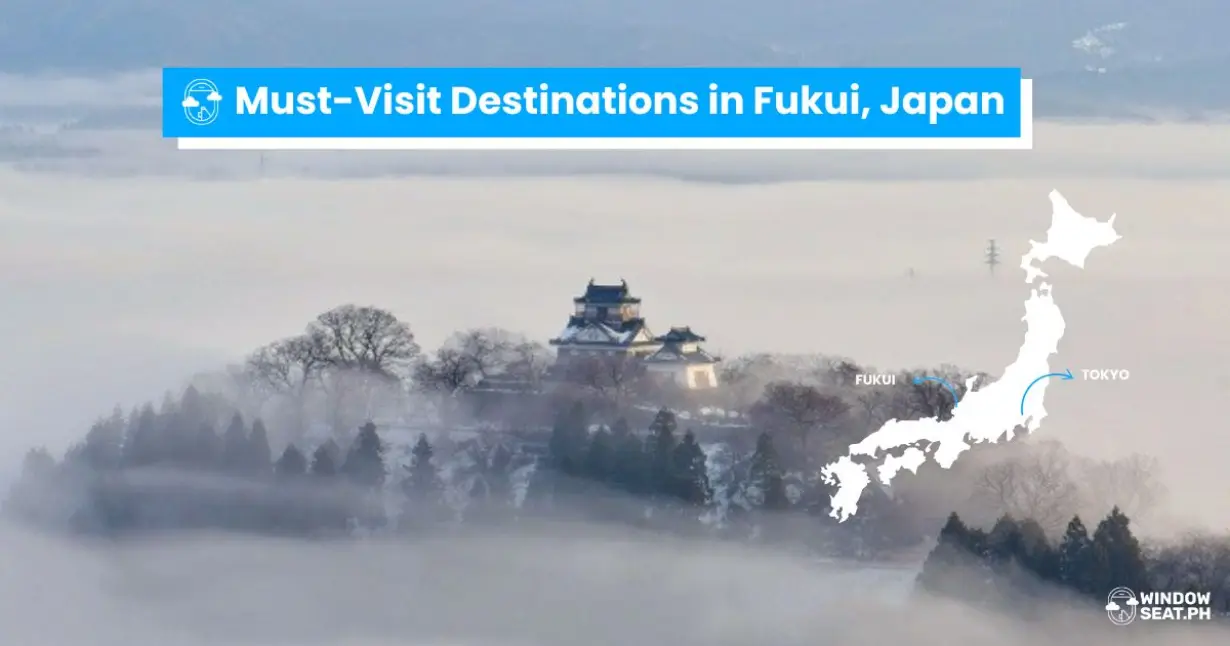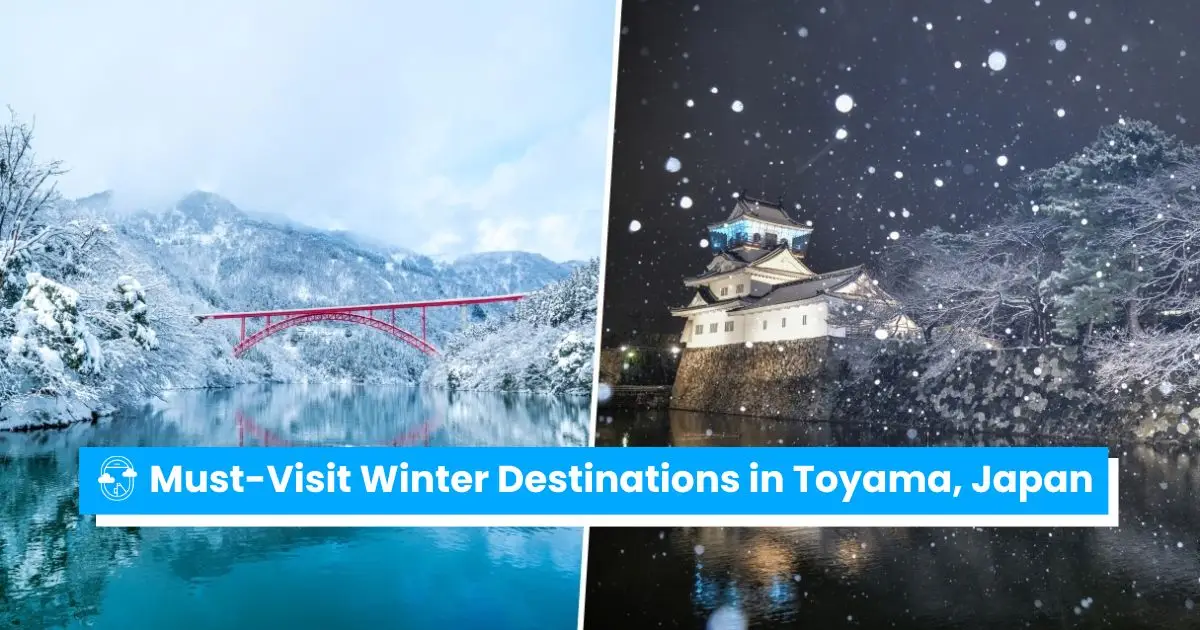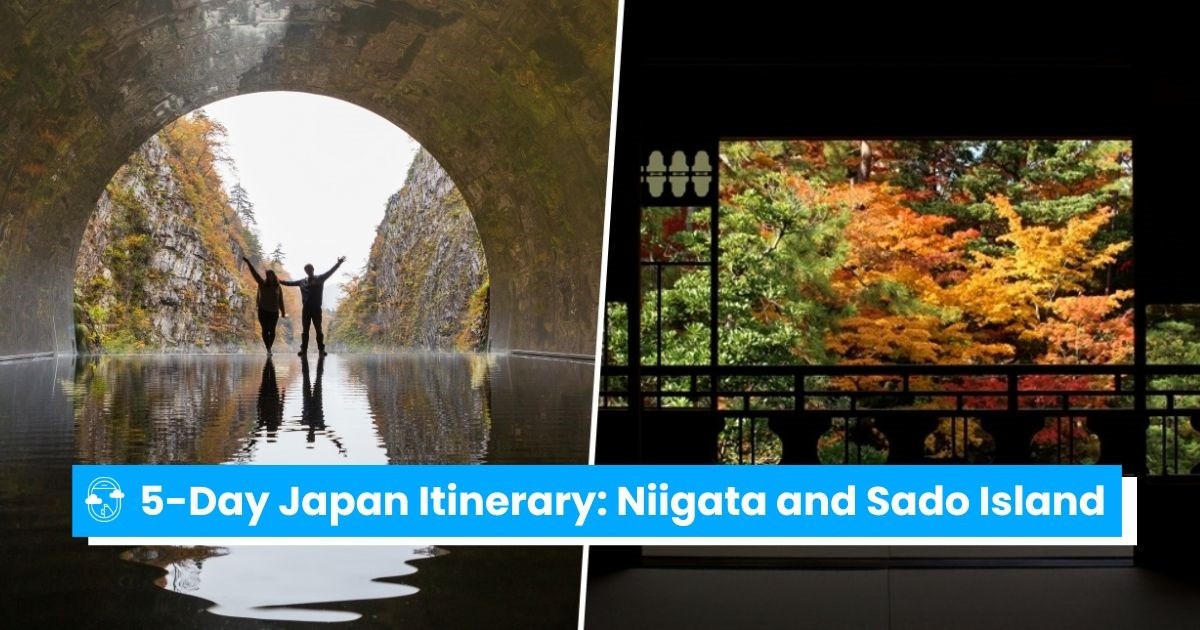Step Into a Painting in Japan’s Hokuriku Region
Hokuriku will also become more accessible to those coming from Tokyo, as new routes will be added to the Hokuriku Shinkansen Line in March 2024.
by Ina Louise Manto | March 05, 2024
From picturesque views to new adventures, Hokuriku Region has it all! This area on the central west coast of Japan is famous for its variety of destinations, which can be dusted with snow or awash with cherry blossoms depending on the time of year. There is a wide array of things to do for any traveler. You may even find yourself coming back again and again. Here are some areas and activities you won’t want to miss.
Echizen Ono Castle (Fukui Prefecture)
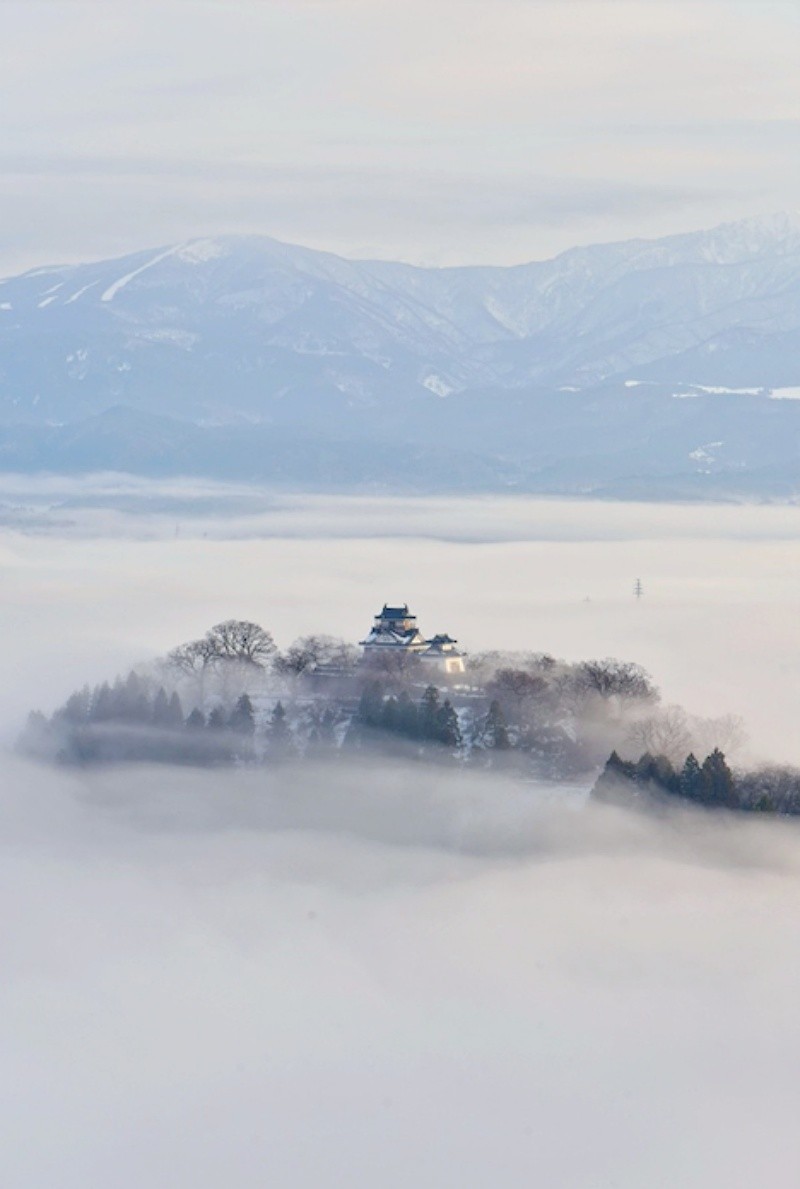
One place you must see, if you go during the colder seasons of the year, is Echizen Ono Castle. If you are lucky, you might witness the visual marvel of ‘The Castle in the Sky.’ Located in the Fukui prefecture, the ‘Castle in the Sky’ phenomenon only happens a few times a year, mostly during November. On those days, the fog forms a sea of clouds, obscuring all but one castle atop a hill–as if it were floating. Few sites in the world are as stunning and magical as this.
The castle town of Ono, founded around 400 years ago, is nestled at the base. Dubbed ‘Little Kyoto,’ this charming town invites exploration of numerous samurai estates and a picturesque avenue flanked by up to 16 temples representing nine distinct Buddhist sects—a rare sight even in Japan.
How to get there: If you are already in Fukui, the castle is a 30-minute walk from JR Echizen Ono Station, 15 minutes by bus from JR Echizen-Ono Station; or 70 minutes by bus from JR Fukui Station.
Shomyo Falls (Toyama Prefecture)
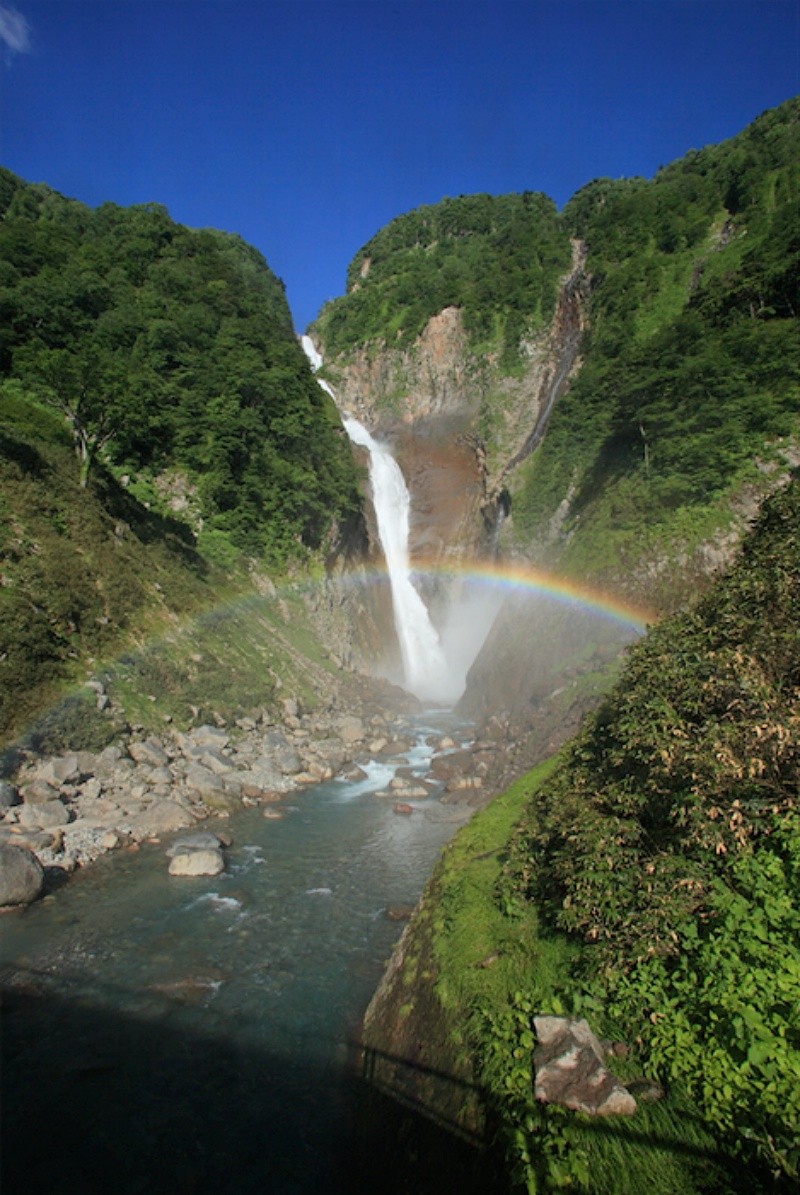
If you are into natural beauty, you will love Shomyo Falls. Found on Mt. Tateyama in the Toyama prefecture, Shomyo Falls is the tallest waterfall in Japan. Surrounded by lush greenery during spring and summer, and the reds and browns of autumn, the ever-changing palette of the falls makes for an incredible scene to behold.
How to get there: Shomyo Falls is 15 minutes by Tateyama Kurobe Kankou (TKK) bus from Tateyama Station (Toyama Chiho Railway), followed by a 30-minute walk.
Kasugayama Castle (Niigata Prefecture)
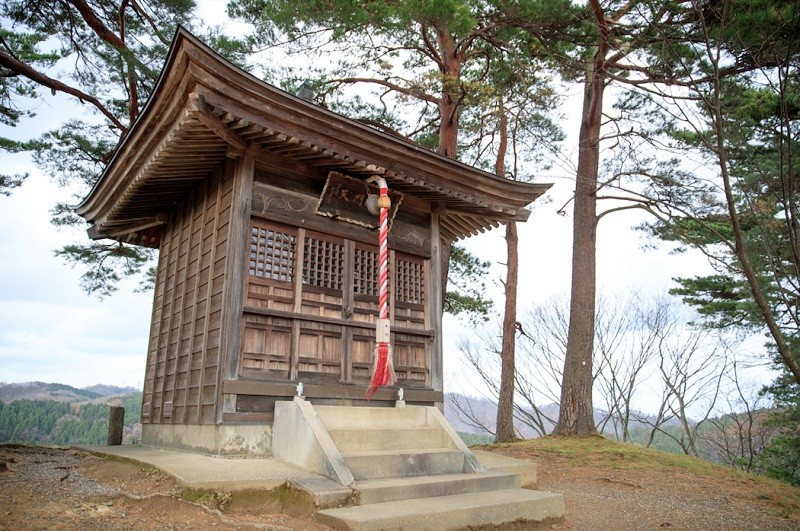
Photo provided by Japan National Tourism Organization (JNTO)
One of Japan’s 100 famous castles is Kasugayama Castle. Its ruins are in Niigata and are a sight to behold. As the former castle of Uesugi Kenshin, the site even has a bronze warrior statue, still standing guard over the place even after centuries. The castle is nestled between mountain ranges and trees to enhance the beautiful view.
How to get there: Kasugayama Castle is a 20-minute walk from Nakayashiki bus stop, or 15 minutes from Kasuga Sanso Mae bus stop to the bronze statue of Uesugi Kenshin.
Heisenji Hakusan Shrine (Fukui Prefecture)
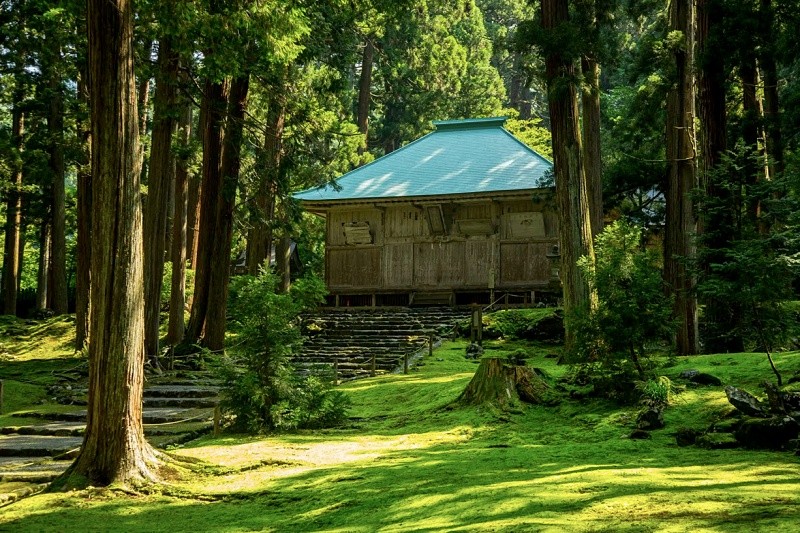
Founded in 717 as a Buddhist temple, the Heisenji Hakusan Shrine in Fukui is historic and surrounded by lush greenery. The forest has begun to take it back to nature, embodying the spirit of Wabi Sabi which is the art of impermanence and imperfection. The ethereal forest and surrounding untamed flora are shrouded in mystery, with beliefs that the area’s mystical aura has granted people their wishes.
How to get there: The easiest way to get to the shrine is by car from Fukui city. The trip is a 45-minute drive from the city center. Alternatively, the shrine is 10 to 15 minutes by bus or taxi from Katsuyama Station.
Asahi Funakawa Spring Quartet (Toyama Prefecture)
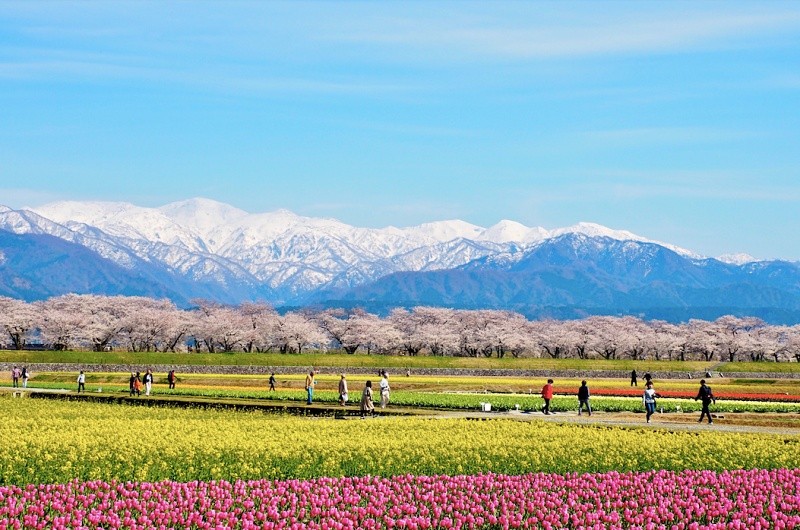
Atop Mt. Asahi in the Toyama prefecture, farmers plant rows of nanohana and tulips every year in time for the cherry blossoms, creating the breathtaking Asahi Funakawa Spring Quartet. The mesmerizing arrangement of flowers is coupled with a view of the snow-capped Northern Alps and is visible from Asahi. The area is illuminated with fire torches at night for an unforgettable experience.
You can get to the Asahi Funakawa Spring Quartet via taxi from Tomari Station or Nyuzen Station in Asahi and Nyuzen respectively. The ride should take around 10 minutes. The lack of public transportation can make it difficult, but the view is worth the rental fee for a car! From April to early May, you can take the Asahimachi Express from Kurobe Unazuki Onsen Station to the Asahi Funakawa Spring Quartet venue with advance reservation.
Hokuriku has no shortage of spots that are striking and spectacular, these are just a few examples of what you have to discover in this area. If you’re planning a trip, do look into what destinations are best for each time of year – there’s always something to look for! Hokuriku will also become more accessible to those coming from Tokyo, as new routes will be added to the Hokuriku Shinkansen Line in March 2024. With otherworldly sights and cultural experiences, Hokuriku is the perfect place for your next trip to the land of Endless Discovery!
This article is a press release. Minor edits have been made by the WindowSeat.ph editorial team.



